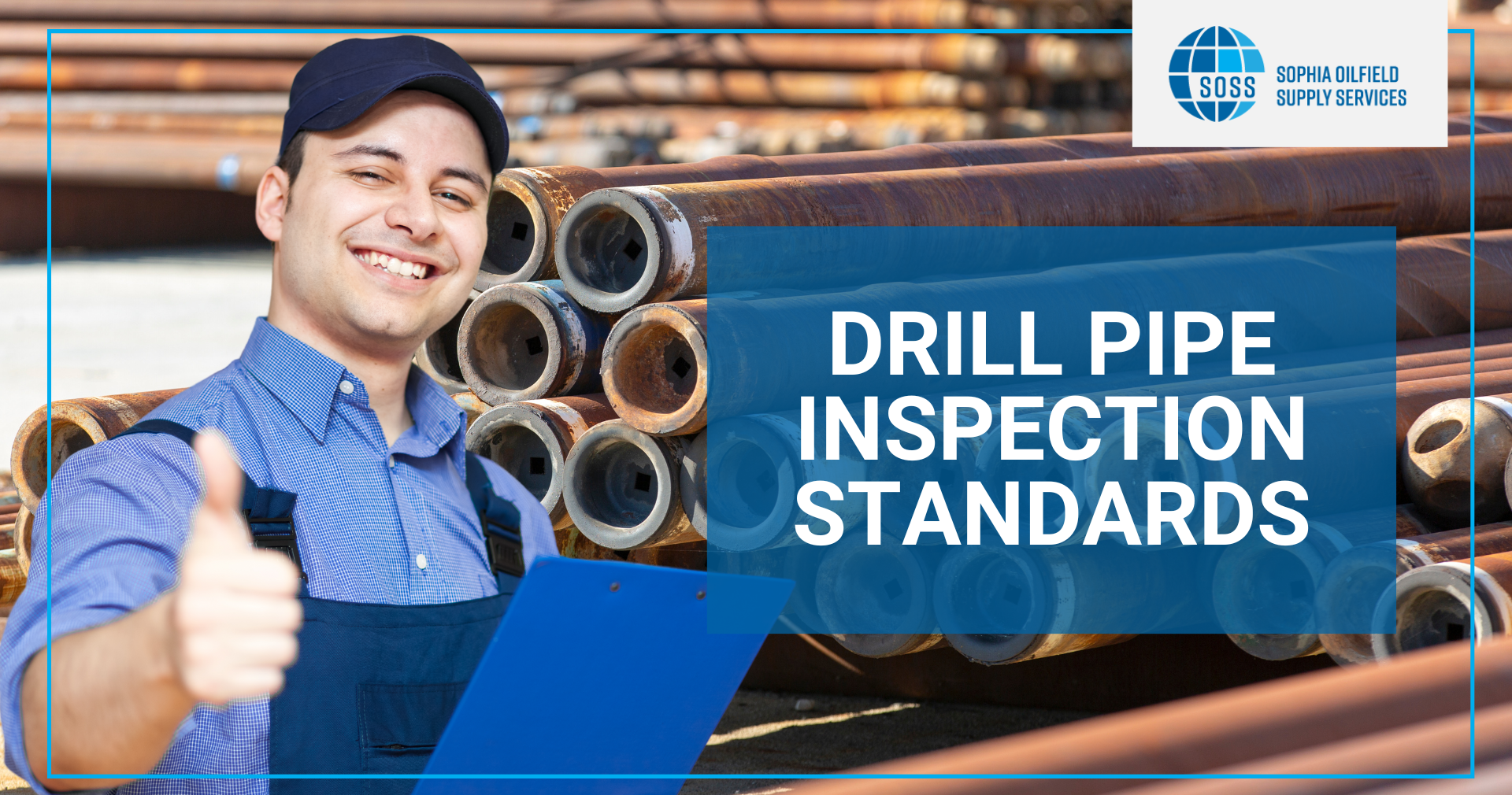A drill pipe is integral to extracting natural resources like oil and gas from the earth. This long and hollow equipment is used for transmitting torque and pumping drilling fluid to the drill bit on the rig, forming a vital component of the drill string.
A drill pipe is made with high-strength materials, particularly steel alloy, to combat and resist the challenging oilfield environment. However, with constant use, it can become prone to gradual, premature wear and tear and corrosion, compromising its structural integrity over time. That renders it crucial to conduct regular inspections of drill stem components as per the industry standard to keep it running smoothly and uninterrupted.
Importance of Drill Pipe Inspection
A drill pipe is exposed to extreme pressures and tensile stress during the drilling process, such as deep well drilling. The harsh, corrosive conditions in which it operates mean that a drill pipe can potentially experience catastrophic failures that can impact the drilling operation by causing costly downtime and also put workers’ safety at significant risk.
Accordingly, periodic inspections to assess the state of drilling equipment are indispensable to ensuring it remains safe to work with and performs with maximum efficiency. Inspections mitigate the chances of drill pipe failure due to corrosion fatigue, fractures, or cyclic stress while enhancing its longevity.
What Does An Inspection Detect?
A drill pipe inspection checks for damage and wear, covering essential drill stem elements like a drill collar, tool joint, heavyweight drill pipe, rotary steerable, stabilizers, turbines, etc.
The inspection process helps identify minor issues that could cause major failures if overlooked and the need to repair or replace specific parts that might be damaged or have integrity problems. Some of the common issues inspectors look out for include but are not limited to:
- Galled threads and seals
- Crack indications in threads and box connections
- Corrosion and pitting
- Pulled threads
- Over torqued threads
- Signs of washout in connections
Types of Inspection Standards
Drilling pipe inspections take place according to the API standard. The main types of specifications outlining minimum drill pipe inspection standards include:
- API 5DP
- API RP 7G
- DS-1 Drill Stem Inspection.
- NS-2 Drillstring Inspection Standard
Drill Pipe Inspection Methods
Drill pipe inspection can comprise several tests as per the API standards. Non destructive testing (NDT) methods involve checking for imperfections in the tubular and connections and examining the quality and integrity of the pipe equipment without altering or causing damage to the drill pipe.
Some of the most common NDT methods are:
Visual Inspection
A visual inspection can be performed on the oilfield whereby the inspector seeks to identify any abnormalities with their naked eye and hands. They might use tools like a flashlight or magnifying glass to help evaluate the drill pipe equipment and check for defects like a crack or drill pipe fatigue.
They will also measure the outer diameter and wall thickness of the pipe to determine if it is up to standards.
Magnetic Particle Inspection (MPI)
The magnetic particle inspection method aims to identify internal flaws on the surface of the material and slightly below it.
It works by applying magnetic fields on the material, which penetrates its surface. If the magnetic field is disrupted due to a flaw in the surface, a leakage field will occur. That can be spotted by introducing iron oxide particles which accumulate around the leakage field.
Ultrasonic Testing
Ultrasonic testing releases sound waves into the pipe material to locate defects or changes in its properties. Inspectors can detect flaws if the high-frequency waves are reflected to the receiver with any changes.
Electromagnetic Scanning
Electromagnetic scanning, commonly known as eddy-current testing, is a test during which electric currents are created to detect flaws in the material surface or below it, such as fatigue cracks, corrosion, etc. If the electromagnetic response shows a change in the pattern or intensity of the current, it could be an indication of a potential defect in the pipe.
Liquid Penetrant Inspection
Liquid penetrant testing reveals surface-breaking flaws in the material, particularly cracks. It works by applying a liquid penetrant for a short period until it seeps into the defect. The excess liquid is removed from the surface, after which a developer makes the surface defects visible.
About Sophia Oilfield Supply Services
SOSSUSA has been a premier provider of high-quality oilfield equipment and services for over three decades. We offer products such as new and used drill pipe for sale across the globe and provide expert drill pipe care and handling solutions and services to meet your diverse needs.
Contact us today to receive a customized estimate for our drill pipe inspection services and ensure maximum reliability and operational excellence during your drilling projects on the field.

